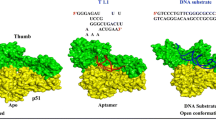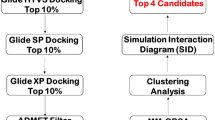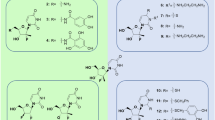Abstract
HIV-1 is a deadly virus that affects millions of people worldwide. In this study, we aimed to inhibit viral replication by targeting one of the HIV-1 proteins and identifying a new drug candidate. We used data mining and molecular dynamics methods on HIV-1 genomes. Based on MAUVE analysis, we selected the RNase H activity of the reverse transcriptase (R.T) enzyme as a potential target due to its low mutation rate and high conservation level. We screened about 94,000 small molecule inhibitors by virtual screening. We validated the hit compounds' stability and binding free energy through molecular dynamics simulations and MM/PBSA. Phomoarcherin B, known for its anticancer properties, emerged as the best candidate and showed potential as an HIV-1 reverse transcriptase RNase H activity inhibitor. This study presents a new target and drug candidate for HIV-1 treatment. However, in vitro and in vivo tests are required. Also, the effect of RNase H activity on viral replication and the interaction of Phomoarcherin B with other HIV-1 proteins should be investigated.









Similar content being viewed by others
Data availability
This work has been published as a preprint version (https://www.biorxiv.org/content/10.1101/2021.09.09.459559v1.full) and additional updates are available to the preprint version.
References
Hemelaar J (2012) The origin and diversity of the HIV-1 pandemic. Trends Mol Med 18(3):182–192. https://doi.org/10.1016/j.molmed.2011.12.001
WHO. H.I.V. data and statistics. https://www.who.int/teams/global-hiv-hepatitis-and-stis-programmes/hiv/strategic-information/hiv-data-and-statistics. Accessed 2023
UNAIDS. Global H.I.V. & AIDS statistics. https://www.unaids.org/en/resources/fact-sheet. Accessed 2023
Cohen MS, Hellmann N, Levy JA, DeCock K, Lange J (2008) "The spread, treatment, and prevention of HIV-1: evolution of a global pandemic. J Clin Invest 118(4):1244–1254. https://doi.org/10.1172/jci34706
Kirchhoff F (2013) H.I.V. Life cycle: overview, pp 1–9
Swanson CM, Malim MH (2008) SnapShot: HIV-1 proteins. Cell 133(4):742. https://doi.org/10.1016/j.cell.2008.05.005
Fanales-Belasio E, Raimondo M, Suligoi B, Buttò S (2010) H.I.V. virology and pathogenetic mechanisms of infection: a brief overview. Ann Ist Super Sanita 46(1):5–14. https://doi.org/10.4415/ann_10_01_02
Ruelas DS, Greene WC (2013) An integrated overview of HIV-1 latency. Cell 155(3):519–29. https://doi.org/10.1016/j.cell.2013.09.044
Volberding PA, Deeks SG (2010) Antiretroviral therapy and management of H.I.V. infection. Lancet 376(9734):49–62. https://doi.org/10.1016/s0140-6736(10)60676-9
Das D, Georgiadis MM (2004) The crystal structure of the monomeric reverse transcriptase from Moloney Murine Leukemia Virus. Structure 12(5):819–829. https://doi.org/10.1016/j.str.2004.02.032
Ahamad S, Islam A, Ahmad F, Dwivedi N, Hassan MI (2019) 2/3D-QSAR, molecular docking and M.D. simulation studies of FtsZ protein targeting benzimidazoles derivatives. Comput Biol Chem 78:398–413. https://doi.org/10.1016/j.compbiolchem.2018.12.017
Poongavanam V, Kongsted J (2013) Virtual screening models for prediction of HIV-1 RT associated RNase H inhibition. PLoS ONE 8(9):e73478. https://doi.org/10.1371/journal.pone.0073478
Shin Y et al (2021) Identification of aristolactam derivatives that act as inhibitors of human immunodeficiency virus type 1 infection and replication by targeting tat-mediated viral transcription. Virol Sin 36(2):254–263. https://doi.org/10.1007/s12250-020-00274-7
Poli G, Granchi C, Rizzolio F, Tuccinardi T (2020) Application of MM-PBSA methods in virtual screening. Molecules. https://doi.org/10.3390/molecules25081971
Gao Y et al (2019) In silico study of 3-hydroxypyrimidine-2,4-diones as inhibitors of H.I.V. RT-associated RNase H using molecular docking, molecular dynamics, 3D-QSAR, and pharmacophore models. New J Chem 43(43):17004–17017. https://doi.org/10.1039/C9NJ03353J
Panwar U, Singh SK (2018) An overview on Zika virus and the importance of computational drug discovery. J Explor Res Pharmacol 3(2):43–51. https://doi.org/10.14218/jerp.2017.00025
Frey KM et al (2022) Structural studies and structure activity relationships for novel computationally designed non-nucleoside inhibitors and their interactions with HIV-1 reverse transcriptase. Front Mol Biosci 9:805187. https://doi.org/10.3389/fmolb.2022.805187
Zhang B, D’Erasmo MP, Murelli RP, Gallicchio E (2016) Free energy-based virtual screening and optimisation of RNase H inhibitors of HIV-1 reverse transcriptase. ACS Omega 1(3):435–447. https://doi.org/10.1021/acsomega.6b00123
Seniya C, Yadav A, Khan GJ, Sah NK (2015) In-silico studies show potent inhibition of HIV-1 reverse transcriptase activity by a herbal drug. IEEE/ACM Trans Comput Biol Bioinform 12(6):1355–1364. https://doi.org/10.1109/tcbb.2015.2415771
Panwar U, Singh SK (2021) In silico virtual screening of potent inhibitor to hamper the interaction between HIV-1 integrase and LEDGF/p75 interaction using E-pharmacophore modeling, molecular docking, and dynamics simulations. Comput Biol Chem 93:107509. https://doi.org/10.1016/j.compbiolchem.2021.107509
Kuiken C, Korber B, Shafer RW (2003) HIV sequence databases. AIDS Rev 5(1):52–61
Thompson JD, Higgins DG, Gibson TJ (1994) CLUSTAL W: improving the sensitivity of progressive multiple sequence alignment through sequence weighting, position-specific gap penalties and weight matrix choice. Nucleic Acids Res 22(22):4673–4680. https://doi.org/10.1093/nar/22.22.4673
Okonechnikov K, Golosova O, Fursov M (2012) Unipro UGENE: a unified bioinformatics toolkit. Bioinformatics 28(8):1166–1167. https://doi.org/10.1093/bioinformatics/bts091
Darling AC, Mau B, Blattner FR, Perna NT (2004) Mauve: multiple alignment of conserved genomic sequence with rearrangements. Genome Res 14(7):1394–1403. https://doi.org/10.1101/gr.2289704
Edgar RC (2004) MUSCLE: a multiple sequence alignment method with reduced time and space complexity. BMC Bioinform 5(1):113. https://doi.org/10.1186/1471-2105-5-113
Geneious Prime 2023.1 (2023). https://www.geneious.com
Waterhouse AM, Procter JB, Martin DM, Clamp M, Barton GJ (2009) Jalview Version 2–a multiple sequence alignment editor and analysis workbench. Bioinformatics 25(9):1189–1191. https://doi.org/10.1093/bioinformatics/btp033
Altschul SF, Gish W, Miller W, Myers EW, Lipman DJ (1990) Basic local alignment search tool. J Mol Biol 215(3):403–410. https://doi.org/10.1016/s0022-2836(05)80360-2
States DJ, Gish W (1994) Combined use of sequence similarity and codon bias for coding region identification. J Comput Biol 1(1):39–50. https://doi.org/10.1089/cmb.1994.1.39
Trott O, Olson AJ (2010) AutoDock Vina: improving the speed and accuracy of docking with a new scoring function, efficient optimisation, and multithreading. J Comput Chem 31(2):455–461. https://doi.org/10.1002/jcc.21334
Himmel DM et al (2009) Structure of HIV-1 reverse transcriptase with the inhibitor beta-Thujaplicinol bound at the RNase H active site. Structure 17(12):1625–1635. https://doi.org/10.1016/j.str.2009.09.016
Berman H, Henrick K, Nakamura H (2003) Announcing the worldwide Protein Data Bank. Nat Struct Biol 10(12):980. https://doi.org/10.1038/nsb1203-980
Esposito F, Corona A, Tramontano E (2012) HIV-1 reverse transcriptase still remains a new drug target: structure, function, classical inhibitors, and new inhibitors with innovative mechanisms of actions. Mol Biol Int 2012:586401. https://doi.org/10.1155/2012/586401
Webb B, Sali A (2016) Comparative protein structure modeling using MODELLER. Curr Protoc Bioinform 54:561–5637. https://doi.org/10.1002/cpbi.3
Fiser A, Do RK, Sali A (2000) Modeling of loops in protein structures. Protein Sci 9(9):1753–1773. https://doi.org/10.1110/ps.9.9.1753
The PyMOL molecular graphics system. (015). https://pymol.org/2/
Morris GM et al (2009) AutoDock4 and AutoDockTools4: automated docking with selective receptor flexibility. J Comput Chem 30(16):2785–2791. https://doi.org/10.1002/jcc.21256
Avogadro: an open-source molecular builder and visualisation tool. (2022). https://avogadro.cc/
Sterling T, Irwin JJ (2015) ZINC 15—ligand discovery for everyone. J Chem Inf Model 55(11):2324–2337. https://doi.org/10.1021/acs.jcim.5b00559
Galilee M, Alian A (2018) The structure of FIV reverse transcriptase and its implications for nonnucleoside inhibitor resistance. PLoS Pathogens 14(1):e1006849. https://doi.org/10.1371/journal.ppat.1006849
Bhagwat M, Meara D, Nossal NG (1997) Identification of residues of T4 RNase H required for catalysis and D.N.A. binding*. J Biol Chem 272(45):28531–28538. https://doi.org/10.1074/jbc.272.45.28531
Dev J et al (2016) "Structural basis for membrane anchoring of HIV-1 envelope spike. Science 353(6295):172–175. https://doi.org/10.1126/science.aaf7066
Salentin S, Schreiber S, Haupt VJ, Adasme MF, Schroeder M (2015) PLIP: fully automated protein-ligand interaction profiler. Nucleic Acids Res 43(W1):W443–W447. https://doi.org/10.1093/nar/gkv315
Ahamad S, Hassan MI, Dwivedi N (2018) Designing of phenol-based β−carbonic anhydrase1 inhibitors through QSAR, molecular docking, and M.D. simulation approach. 3 Biotech 8(5):256. https://doi.org/10.1007/s13205-018-1278-z
Ahamad S, Kanipakam H, Birla S, Ali MS, Gupta D (2021) Screening Malaria-box compounds to identify potential inhibitors against SARS-CoV-2 Mpro, using molecular docking and dynamics simulation studies. Eur J Pharmacol 890:173664. https://doi.org/10.1016/j.ejphar.2020.173664
Schrödinger Release 2022-3: Maestro (2021). New York. https://www.schrodinger.com/products/maestro
Pelemis S, Tomić B, Armaković S, Armaković S (2019) Reactive properties of ephedrine molecule—a frequently used stimulant
Liu H, Hou T (2016) CaFE: a tool for binding affinity prediction using end-point free energy methods. Bioinformatics 32(14):2216–2218. https://doi.org/10.1093/bioinformatics/btw215
Hou T, Wang J, Li Y, Wang W (2011) Assessing the performance of the MM/PBSA and MM/GBSA methods. 1. The accuracy of binding free energy calculations based on molecular dynamics simulations. J Chem Inf Model 51(1):69–82. https://doi.org/10.1021/ci100275a
Singh N, Warshel A (2010) Absolute binding free energy calculations: on the accuracy of computational scoring of protein-ligand interactions. Proteins 78(7):1705–1723. https://doi.org/10.1002/prot.22687
Daina A, Michielin O, Zoete V (2017) SwissADME: a free web tool to evaluate pharmacokinetics, drug-likeness and medicinal chemistry friendliness of small molecules. Sci Rep 7(1):42717. https://doi.org/10.1038/srep42717
Lipinski CA, Lombardo F, Dominy BW, Feeney PJ (2001) Experimental and computational approaches to estimate solubility and permeability in drug discovery and development settings. Adv Drug Deliv Rev 46(1–3):3–26. https://doi.org/10.1016/s0169-409x(00)00129-0
Ghose AK, Viswanadhan VN, Wendoloski JJ (1999) A knowledge-based approach in designing combinatorial or medicinal chemistry libraries for drug discovery. 1. A qualitative and quantitative characterisation of known drug databases. J Comb Chem 1(1):55–68. https://doi.org/10.1021/cc9800071
Veber DF, Johnson SR, Cheng HY, Smith BR, Ward KW, Kopple KD (2002) Molecular properties that influence the oral bioavailability of drug candidates. J Med Chem 45(12):2615–2623. https://doi.org/10.1021/jm020017n
Egan WJ, Merz KM, Baldwin JJ (2000) Prediction of drug absorption using multivariate statistics. J Med Chem 43(21):3867–3877. https://doi.org/10.1021/jm000292e
Muegge I, Heald SL, Brittelli D (2001) Simple selection criteria for drug-like chemical matter. J Med Chem 44(12):1841–1846. https://doi.org/10.1021/jm015507e
Cheng F et al (2012) admetSAR: a comprehensive source and free tool for assessment of chemical ADMET properties. J Chem Inf Model 52(11):3099–3105. https://doi.org/10.1021/ci300367a
Xiong G et al (2021) ADMETlab 2.0: an integrated online platform for accurate and comprehensive predictions of ADMET properties. Nucleic Acids Res 49(W1):W5-w14. https://doi.org/10.1093/nar/gkab255
Waterson AP (1983) Acquired immune deficiency syndrome. Br Med J 286(6367):743–746. https://doi.org/10.1136/bmj.286.6367.743
Wingert BM, Oerlemans R, Camacho CJ (2018) Optimal affinity ranking for automated virtual screening validated in prospective D3R grand challenges. J Comput Aided Mol Des 32(1):287–297. https://doi.org/10.1007/s10822-017-0065-y
Sarma H, Mattaparthi VSK (2019) Structure-based virtual screening of high-affinity ATP-competitive inhibitors against human Lemur Tyrosine Kinase-3 (LMTK3) Domain: a novel therapeutic target for breast cancer. Interdiscip Sci 11(3):527–541. https://doi.org/10.1007/s12539-018-0302-7
Méndez-Álvarez D et al (2022) Ligand-based virtual screening, molecular docking, and molecular dynamics of eugenol analogs as potential acetylcholinesterase inhibitors with biological activity against Spodoptera frugiperda. Mol Divers 26(4):2025–2037. https://doi.org/10.1007/s11030-021-10312-5
Fournier PE et al (2006) Comparative genomics of multidrug resistance in Acinetobacter baumannii. PLoS Genet 2(1):e7. https://doi.org/10.1371/journal.pgen.0020007
Hardison RC (2003) Comparative genomics. PLoS Biol 1(2):E58. https://doi.org/10.1371/journal.pbio.0000058
De Clercq E (2004) Nonnucleoside reverse transcriptase inhibitors (NNRTIs): past, present, and future. Chem Biodivers 1(1):44–64. https://doi.org/10.1002/cbdv.200490012
King RW, Klabe RM, Reid CD, Erickson-Viitanen SK (2002) Potency of nonnucleoside reverse transcriptase inhibitors (NNRTIs) used in combination with other human immunodeficiency virus NNRTIs, NRTIs, or protease inhibitors. Antimicrob Agents Chemother 46(6):1640–1646. https://doi.org/10.1128/aac.46.6.1640-1646.2002
De Clercq E (1999) Perspectives of nonnucleoside reverse transcriptase inhibitors (NNRTIs) in the therapy of HIV-1 infection. Farmaco 54(1–2):26–45. https://doi.org/10.1016/s0014-827x(98)00103-7
Melikian GL et al (2014) Nonnucleoside reverse transcriptase inhibitor (NNRTI) cross-resistance: implications for preclinical evaluation of novel NNRTIs and clinical genotypic resistance testing. J Antimicrob Chemother 69(1):12–20. https://doi.org/10.1093/jac/dkt316
Huang J et al (2017) CHARMM36m: an improved force field for folded and intrinsically disordered proteins. Nat Methods 14(1):71–73. https://doi.org/10.1038/nmeth.4067
Jo S, Kim T, Iyer VG, Im W (2008) CHARMM-GUI: a web-based graphical user interface for CHARMM. J Comput Chem 29(11):1859–1865. https://doi.org/10.1002/jcc.20945
Hemtasin C et al (2011) Cytotoxic pentacyclic and tetracyclic aromatic sesquiterpenes from Phomopsis archeri. J Nat Prod 74(4):609–613. https://doi.org/10.1021/np100632g
Bedi A, Adholeya A, Deshmukh KS (2018) Novel anticancer compounds from Endophytic fungi. Curr Biotechnol 7(3):168–184. https://doi.org/10.2174/2211550105666160622080354
Author information
Authors and Affiliations
Contributions
NAG: formal analysis; writing—original draft preparation. KKK: conceptualisation; investigation; formal analysis; writing—review & editing—original draft preparation. ÖB: conceptualisation; investigation; formal analysis; writing—original draft preparation—writing—review & editing. BES: investigation; formal analysis. RSS: conceptualisation; formal analysis; writing—original draft preparation. All authors commented on previous versions and read and approved the final manuscript.
Corresponding author
Ethics declarations
Competing interests
The authors declare no competing interests.
Additional information
The study is dedicated to the memory of the late Prof. Dr. Randall J. Cohrs.
Publisher's Note
Springer Nature remains neutral with regard to jurisdictional claims in published maps and institutional affiliations.
Supplementary Information
Below is the link to the electronic supplementary material.
Supplementary file16 (MP4 3545 KB)
Rights and permissions
Springer Nature or its licensor (e.g. a society or other partner) holds exclusive rights to this article under a publishing agreement with the author(s) or other rightsholder(s); author self-archiving of the accepted manuscript version of this article is solely governed by the terms of such publishing agreement and applicable law.
About this article
Cite this article
Ghafoor, N.A., Kırboğa, K.K., Baysal, Ö. et al. Data mining and molecular dynamics analysis to detect HIV-1 reverse transcriptase RNase H activity inhibitor. Mol Divers (2023). https://doi.org/10.1007/s11030-023-10707-6
Received:
Accepted:
Published:
DOI: https://doi.org/10.1007/s11030-023-10707-6




